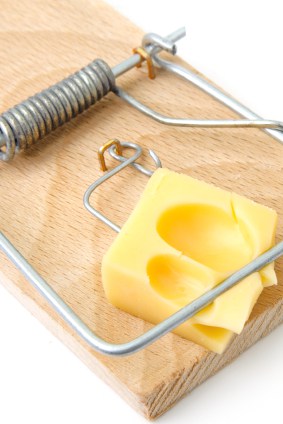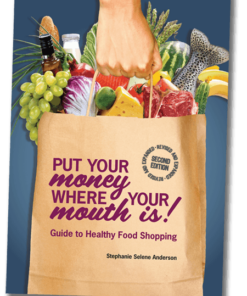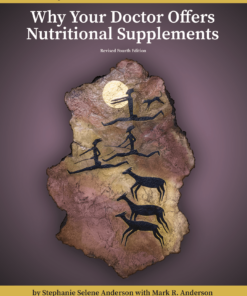In a social climate where truth depends on what the meaning of the word “is” is, is it strange that some “raw” milk cheeses sold in Whole Foods and other health food stores are not made from raw milk?
Let’s establish first that raw milk is only raw when the enzymes are alive. According to pioneering enzyme authority Edward Howell, author of Enzyme Nutrition, the enzymes in raw milk start to degrade at 117°F. Food enzymes withstand dry heat much better than wet heat, according to Dr. Mary Enig, Board Member Emeritus of the Weston A. Price Foundation in an article about food enzymes: “All enzymes are deactivated at a wet-heat temperature of 118 degrees Fahrenheit, and a dry-heat temperature of about 150 degrees. It is one of those happy designs of nature that foods and liquids at 117 degrees can be touched without pain, but liquids over 118 degrees will burn. Thus we have a built-in mechanism for determining whether or not the food we are eating still contains its enzyme content.”
The next fact to build on is that the dairy chemists use a specific test to determine if milk is pasteurized (bacteria is dead). Known as the Alkaline Phosphatase Enzyme test, it is used because this enzyme survives longer at higher temperatures than the bacteria. This test is inexpensive as it takes mere seconds to determine if the alkaline phosphatase enzyme is destroyed instead of taking days in a lab to culture the pasteurized milk to test for bacteria. This way, the dead alkaline phosphatase enzyme serves as a proxy for the dead bacteria.
Here’s a test for you: What is the critical enzyme that helps the body turn calcium into bone? Yep, it’s alkaline phosphatase. Beautiful irony if you get past the tragedy.
To add to the tragedy, the good bacteria in milk are destroyed by pasteurization temperatures, along with any bad bacteria. Good bacteria (known as lactic acid bacteria) are those that turn lactose (milk sugar) into lactic acid. That would be your yogurt, kefir, and buttermilk bacterial cultures, just to name a few. These bacteria are destroyed at temperatures of about 108°F to 115°F. In other words, lactic acid bacteria prevent the milk from rotting.
The lactic acid promotes the “spoiling” of the milk, a natural fermentative stage in the food-to-food-to-food life of healthy, clean raw milk. For instance, raw milk left on the counter at room temperature will turn to sour (spoiled) milk (also known as clabbered) or can be cultured into buttermilk, yogurt, or kefir. Pasteurized milk has to be re-pasteurized and then re-cultured because it will never sour (spoil) or clabber; it will only rot.
Pasteurization covers up poor hygienic standards from the farm to the dairy (which, back in the day, used to be the same place). Why would it matter to the farmer if his milk is dirty when it’s going to be sterilized? All the milk from many farms, poor quality and good quality, are mixed together and sterilized. And since the government sets the floor for the price of milk, farmers have no incentive to personally produce a superior product. If a farmer finds a dead cat in his milk tank, it will not stop him from selling it to the dairy. Nor will it stop the dairy from buying it because it will soon be sterilized with high heat.
When the FDA talks about bacteria in milk, they mean bad bacteria. In most cases, bad bacteria wouldn’t be in the milk if the dairy farmers kept to high standards like those of certified raw milk dairy farmers. In certified raw milk, the bacteria levels are very low and are of a harmless species that crowd out opportunistic bad species. Choosing your certified raw milk dairy is every bit as important as choosing a good restaurant where you know you can safely feed your kid a hamburger.
In order to prevent your raw milk freedom from gaining a foothold, the government has compromised our ability to buy raw milk cheese. And now they are working to ban raw milk cheese. In this New York Times article, “Raw Milk Cheese Makers Fret Over Possible New Rules,” Dr. Dennis J. D’Amico, senior research scientist of the Vermont Institute for Artisan Cheese of the University of Vermont, states that. “…aging could be effective as a safeguard in hard cheeses if it were combined with careful control of milk quality, improved sanitation and testing in cheese plants.” Precisely. Hygiene: what a revelation.
Meanwhile back at the sterilization ranch, provisions in the FDA’s Grade “A” Pasteurized Milk Ordinance result in allowing companies like Organic Valley to call milk “raw” for cheesemaking simply because the milk is not heated to pasteurization temperatures. The lowest pasteurization temperature you will see on the FDA chart is 145°F for 30 minutes. According to Organic Valley Consumer Relations, “Legally, any milk that is not pasteurized is considered raw milk and must be labeled as such on products sold for consumption in the United States. For white fluid milk, the time-temperature relationship for HTST processed milk (high-temperature, short-time) is a minimum of 161°F for at least 15 seconds. Our raw milk cheese is heated to 158 degrees F for 15 seconds, which is just below the pasteurization threshold.” Their words; you decide.
Consider this: The water in your hot water heater is about 125°F. If you were to hold your hand in that 125-degree water for 15 seconds, you would be rushing to your local burn center for treatment. No human skin, human breast milk, raw milk enzymes, or any beneficial bacteria would survive Organic Valley’s subpasteurization temperature of 158°F for 15 seconds.
For your food-shopping intelligence, let’s review this gumbo of facts: (1) Enzymes necessary to the proper digestion of milk and its nutrients start to degrade at 117°F. (2) Beneficial raw milk bacteria are destroyed between 105–115°F. (3) Legal pasteurization temperatures start at 145°F and go as high as 212°F. (4) Subpasteurization temperatures are considered to be anything that is below legal pasteurization. (5) Because, legally, any milk that is not pasteurized is considered raw milk, cheese labeled “raw milk” might not, on closer examination, be made from raw milk.
Perhaps the fact that cheese not made from raw milk is still allowed to be sold as “raw milk cheese” is not the strangest thing that’s happened to you today, but if you were not abducted by aliens, it should be on the list. Perhaps so-called health food companies trying to get the halo effect from using the term “raw milk” while not providing a raw milk product is not surprising in our cynical food culture. But it is just this sort of insidious messing with our food and language that causes serious brain damage in more ways than one. Also, it gives an unfair advantage to “subpasteurized” cheese makers over genuine raw milk cheese makers who are forced to compete with these deceitful cheese producers and products.
What can you do to ensure your cheese is raw? Buy from local or online artisan cheese makers. Be sure to ask questions about the temperatures they use. Get a copy of Sally Fallon’s “Weston A. Price Foundation Shopping Guide.” For only $2.00, and updated every year, the guide covers all categories of food. Her breakdown of “Best, Good, and, Avoid” will tell you which cheese brands are truly raw. Happy Raw Milk Cheese Hunting!
Photo from iStock/tescha555





Thank you Stephanie for writing this article. Most people have never ‘wrist tested’ warm milk except for their babies’ bottle milk. Unfortunately, most home cheese makers heat their raw milk too high as well. When teaching a cheese making class, we have the students check a thermometer often since they can not gauge 105 degrees accurately…the point where we start to destroy the beneficial enzymes in raw milk. Your guide lines were most helpful.